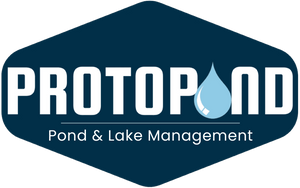What is a Pond Aerator
When it comes to keeping a beautiful pond in check, pond enthusiasts frequently find themselves frustrated and disappointed by the constant battles with algae growth, cloudy water, and sluggish fish. Amidst all these challenges, the pond aerator holds the key to a miraculous solution. In this post, we will explore what pond aerators are and how they work to create a healthy pond ecology. Once we know more about how it affects water quality, fish health, and the general look, the pond aerator will be the secret tool you need to make a thriving water sanctuary.
What is a Pond Aerator?
At its core, a pond aerator is like the breath of fresh air your pond desperately needs. It is the key ingredient that keeps your aquatic environment healthy. Think about this: your pond needs air to live, just like we do. A pond aerator makes sure that there is always free oxygen in the water, which is important for the health of plants, fish, and good bacteria.
How does a Pond Aerator work?
A pond aerator works by infusing oxygen into the water which is essential for the survival of aquatic organisms. It does this by transferring oxygen from the air into the water through a series of processes, including propellers, pumps, and the creation of bubbles on the water's surface. As a result, the dissolved oxygen levels in the pond rise, which is good for the fish, the good bacteria, and the ecosystem as a whole. Pond aerators reduce the likelihood of algae blooms, keep water from becoming stagnant, and improve visibility by oxygenating and recirculating the water.
What are the different types of pond aerators?
There are different kinds of pond aerators, and each one works in a different way to add air to the water. Here is a comparison table for you to compare different features of pond aerators, pros and cons and mostly importantly, the budget:
|
Feature |
Submersible Aerators
|
Floating Aerators
|
Solar-Powered Aerators
|
DIY Aerators
|
|
Location |
Underwater |
Surface |
Surface |
Underwater or Surface |
|
Mechanism |
Diffuses oxygen through bubbles |
Agitates water and draws in air |
Solar panels power air pump |
Various methods like airStone pumps, fountains, etc. |
|
Oxygenation Method |
Creates a gentle curtain of bubbles rising through the water |
Churns up surface, increasing oxygen absorption |
Diffuses oxygen through bubbles or pushes water through a fountain, trapping oxygen |
Introduces oxygen through bubbles or water movement |
|
Benefits |
Discreet, silent operation, reaches all water depths, maintains serene surface |
Adds visual interest, improves water circulation, good for shallow ponds |
Eco-friendly, low energy consumption, ideal for ponds with good sun exposure |
Budget-friendly, customizable, fun DIY project |
|
Drawbacks |
Requires power cord or battery, may not be as effective in shallow ponds |
Can be noisy, may not reach deeper water levels, disrupts surface aesthetics |
Requires good sun exposure, limited power output compared to electric models |
Requires planning, may not be as efficient as store-bought options |
|
Maintenance |
Clean diffusers regularly, check air pump and tubing |
Maintain motor and propellers, keep water debris away |
Clean solar panels, monitor battery levels |
Varies depending on method, regular cleaning and monitoring recommended |
|
Cost |
Moderate to high |
Moderate to high |
Low to moderate |
Minimal to low |
|
Best for |
Deeper ponds, maintaining a serene surface |
Shallow ponds, adding visual interest, improved circulation |
Environmentally conscious pond owners, ponds with good sun exposure |
Budget-conscious Pond lovers, creativity enthusiasts |
How to choose a Perfect Aerator?
Size Matters:
The primary guideline for choosing an aerator? Dimensions! Your aerator, like Goldilocks' porridge, must be "just right" for the dimensions of your pond. If you need rapid advice, go to this useful table:
Types of Fish:
Consider the type of fish in your ponds. Compared to a school of Koi fish, guppies don't need as much oxygen. The power requirements of the aerator are affected by the quantity and activity level of your fish.
Budget & Lifestyle
Aeration shouldn't be a financial burden. Various options are available to cater to different tastes! Eco-conscious people can opt for solar options. DIY enthusiasts can go for budget-friendly homemade solutions, to save money. Additionally, there is an abundance of submersible and floating alternatives that are prepared to perform their bubbly magic at the push of a button for individuals who favor a plug-and-play method.
Pro tips for Aerator Success
For aerator success, place it strategically to maximize oxygen distribution. To keep everything running smoothly, clean the filters and remove any dirt on a regular basis. Aeration effectiveness is affected by the ratio of aerator size to pond volume. Finally, monitor oxygen levels periodically to adjust aerator settings as needed, ensuring a healthy and flourishing pond ecosystem.
In conclusion, if you want your pond ecosystem to thrive, you need pond aerators. They bring out your pond's best potential by oxygenating the water, reducing algae, and improving clarity. Take advantage of their transforming abilities and see your pond transform into a beautiful haven for fish and other aquatic creatures.





